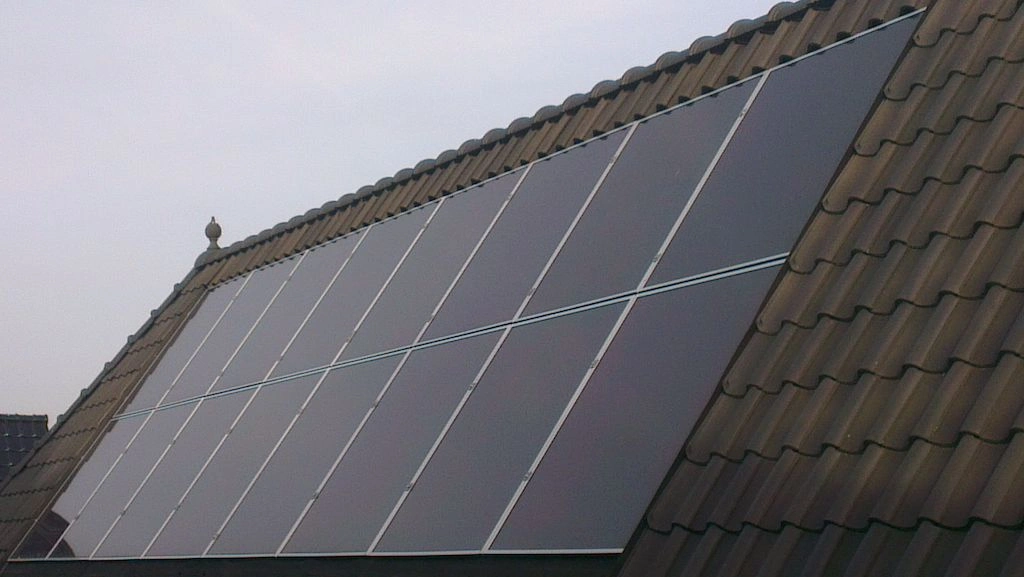In an in-roof system, the solar panels have two functions: roofing and energy generation. Contrary to an 'above-roof' system, the solar panels in an in-roof system are, as the name suggests, incorporated into the roof. The existing roofing is removed and the solar panels are attached to the substructure. A sheet of HDPE plastic is placed underneath the panels to make sure rainwater doesn't penerate the roof.

In-roof solar panels blend in between the roof tiles
The main reason why people would choose an in-roof system is the aesthetic aspect. The solar panels form a sleek whole with the rest of the roof and that gives a smooth appearance.
Another advantage is that the load on the building is lower for this type of installation. Because the solar panels also serve as roofing, the system is lighter than an on-roof system where the solar panels are attached to the existing roofing.
The third advantage only applies when you want to buy a new-build home. You can then choose to have a roof-mounted solar panel system installed immediately, which will save you money on the purchase of roof tiles.
There are also a few disadvantages linked to in-roof systems. We'll list a few:
The purchase price of in-roof solar panels is higher than for regular panels, if you want to have the panels installed on your existing home. Per Watt peak, in-roof solar panels are about 2 to 3 times more expensive than, for example, high-quality SunPower panels. The installation and work preparation costs are also a lot higher. Making a correct calculation takes more time and the chance of errors is greater, which means that more expertise is required from the installer.
Solar panels naturally have the function of capturing sunlight. This causes the panels to heat up. Normally this isn't a problem, but because the solar panels in an in-roof system are built into the roof and therefore air cannot circulate underneath them, it's harder for them to dissipate heat. In-roof solar panels become significantly hotter than on-roof systems. And at higher temperatures, solar panels produce less power. Over the course of a year, in-roof solar panels can therefore provide a significantly lower yield.
An in-roof solar panel system is more susceptible to fire. This is evident from research conducted by TNO to determine the causes of a number of fires in solar panel systems that occurred in 2018. The fires appeared to have mainly started in in-roof systems. Since the panels are incorporated inside the roof, the cables connecting the panels are situated inside the roof structure and can be in direct contact with potentially flammable insulation material. As a result, a poorly installed connector that becomes very hot can, in the worst case, come into contact with flammable parts and thus cause a fire. In contrast, connectors in an on-roof system only come in contact with roof tiles or metal mounting structures which are not flammable: therefore the risk of fire is virtually non-existent.
Despite the fact that there may be good reasons to choose an in-roof system, we believe that the advantages do not outweigh the disadvantages. For this reason, we have decided not to include in-roof solar panels in our range. Curious about which products we do offer? Take a look at our products page. Our advisors will be happy to help you find the best option for your roof.